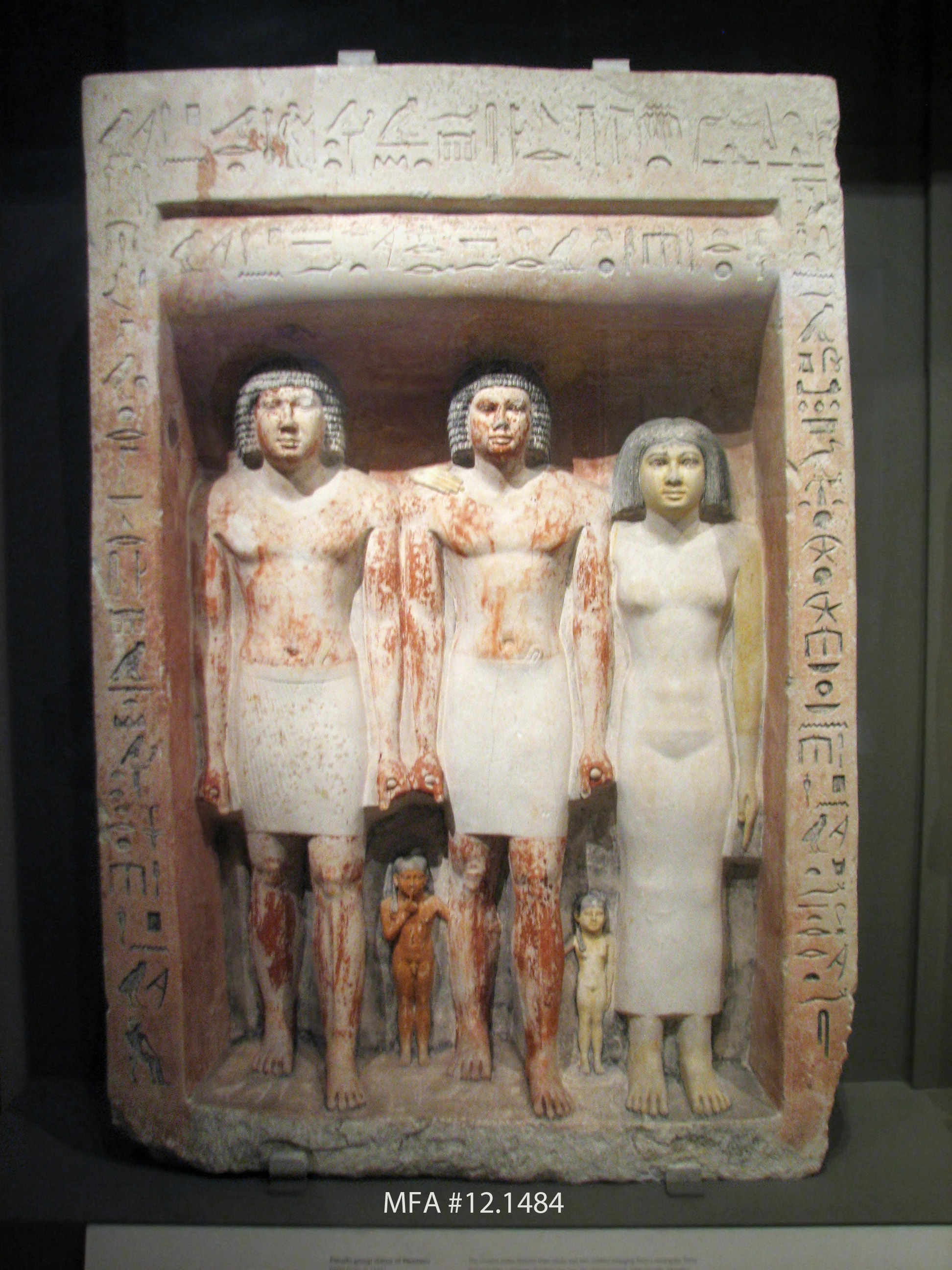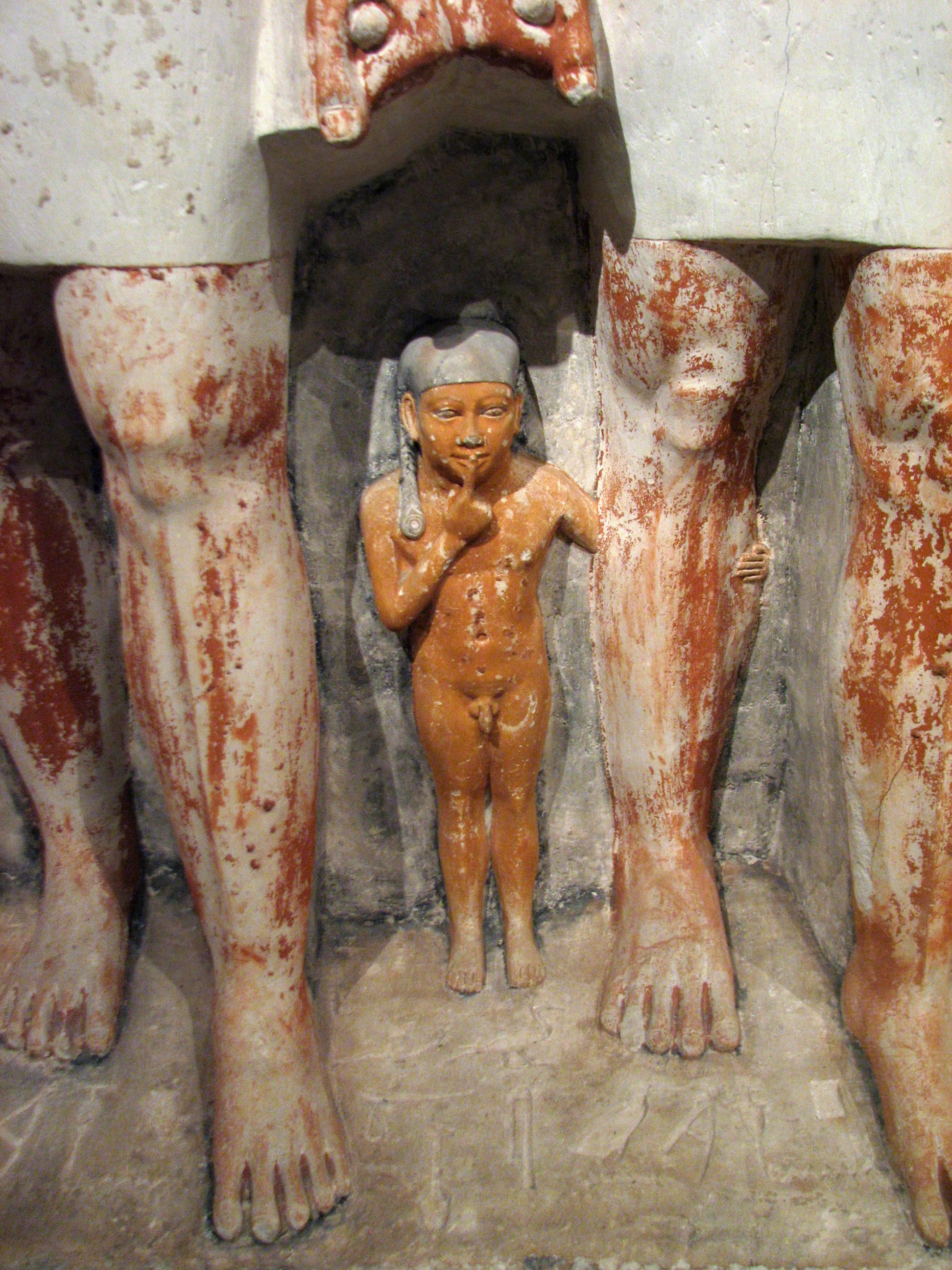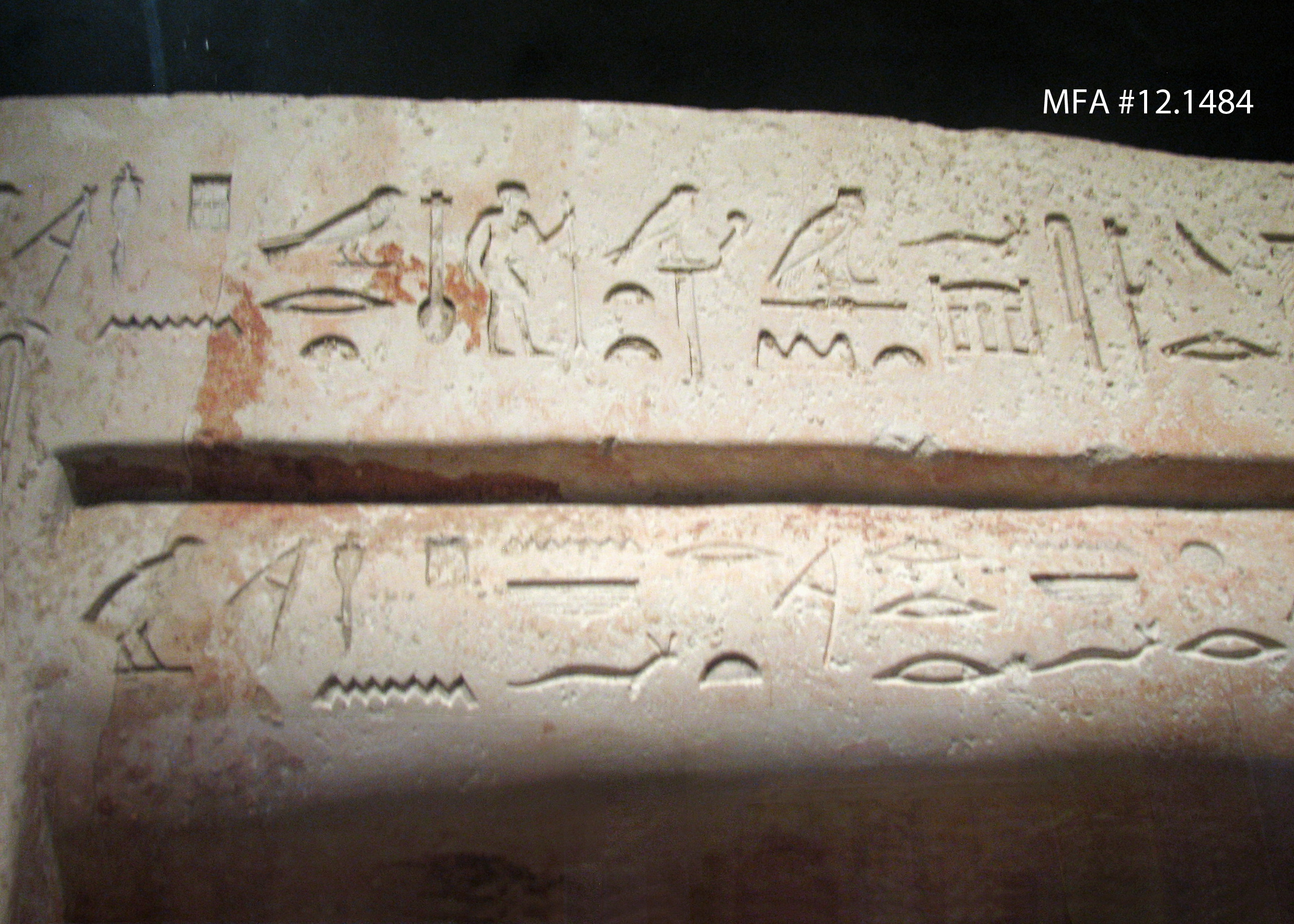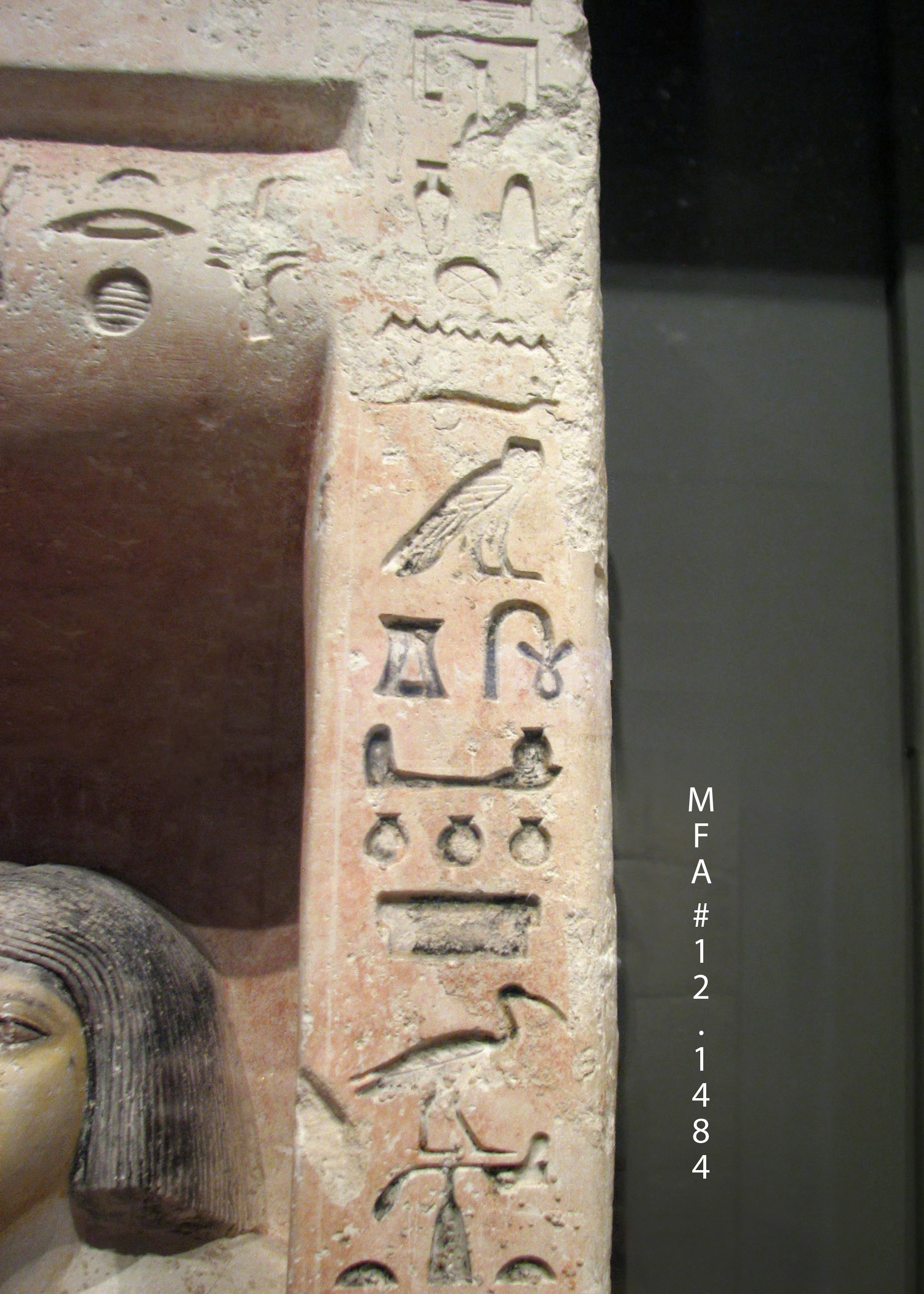"This unusual statue features three adults and two children emerging from a rectangular frame that resembles a doorway. Penmeru occupies the central position, while his wife, Meretites, stands beside him with her arm around his shoulder. The couple's son and daughter stand on either side of Penmeru, each grasping one of his legs. The children are protrayed in typical Egyptian manner - nude and wearing short hair with a single, long sidelock."(From Info Card)
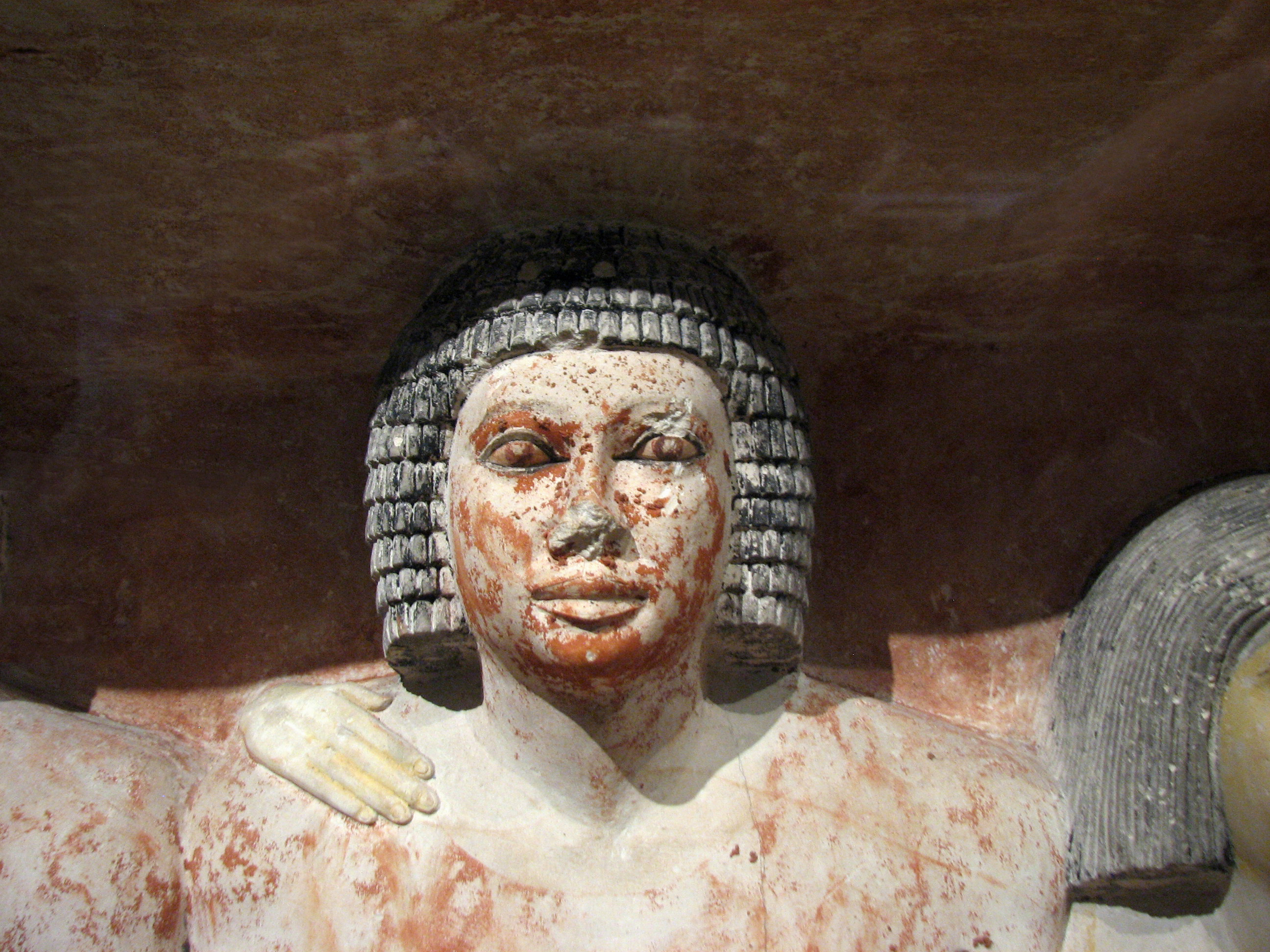
Central Penmeru...
Photos ©Joan Ann Lansberry, 2014
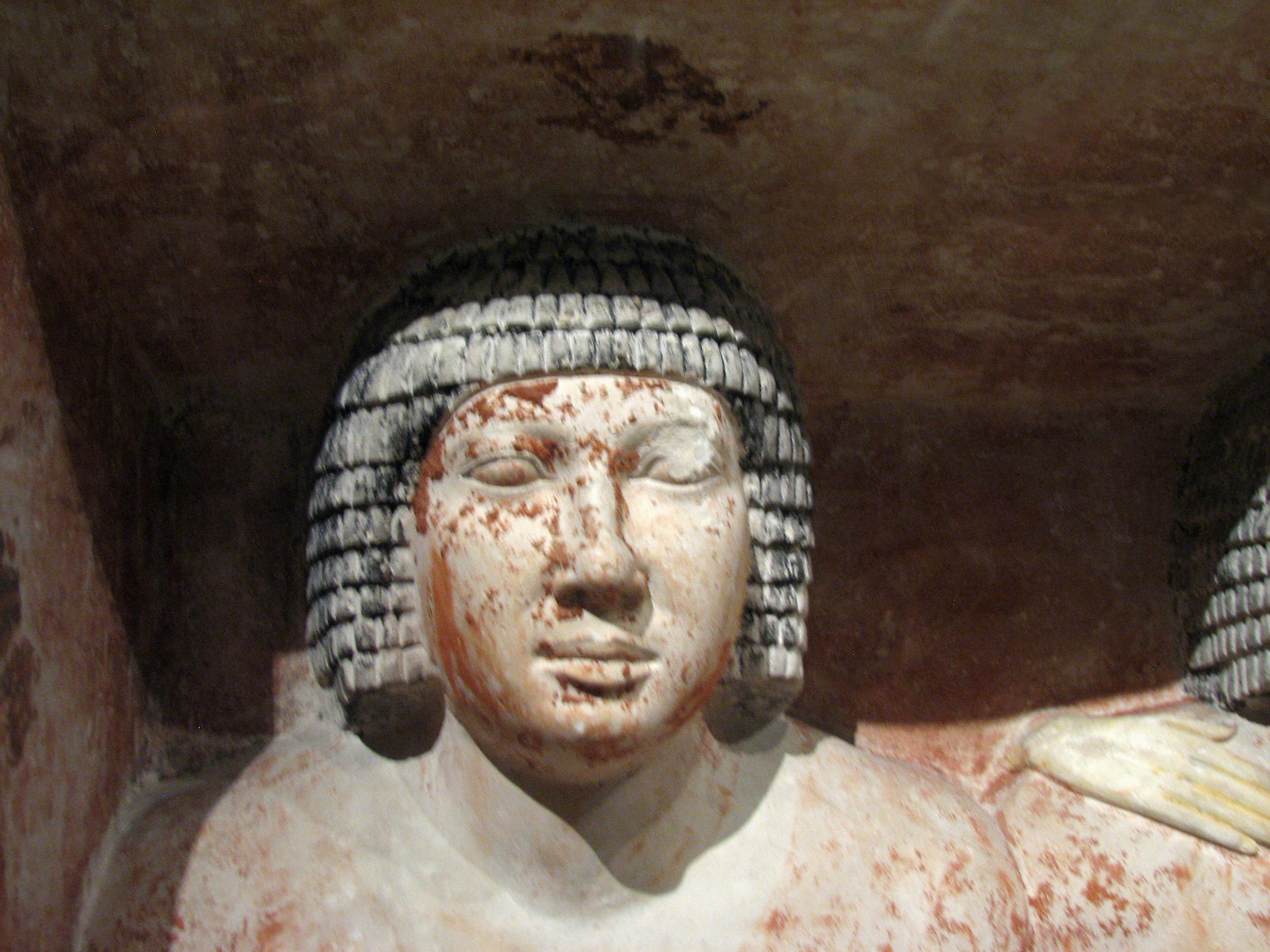
Left side Penmeru...
"The man on the left (from the viewer's perspective) is identical to Penmeru except for the style of his kilt. Oddly, he does not interact with the group. Although we might expect him to be unrelated to the others, the inscription identifies him as a second figure of Penmeru. This is therefore an example of a 'pseudo-group,' in which the same person appears more than once. Statues of this type appear only for a short period in dynasties 5 and 6. Scholars do not agree on why tomb-owners at this time included multiple images of themselves in a single statue." (From Info Card)
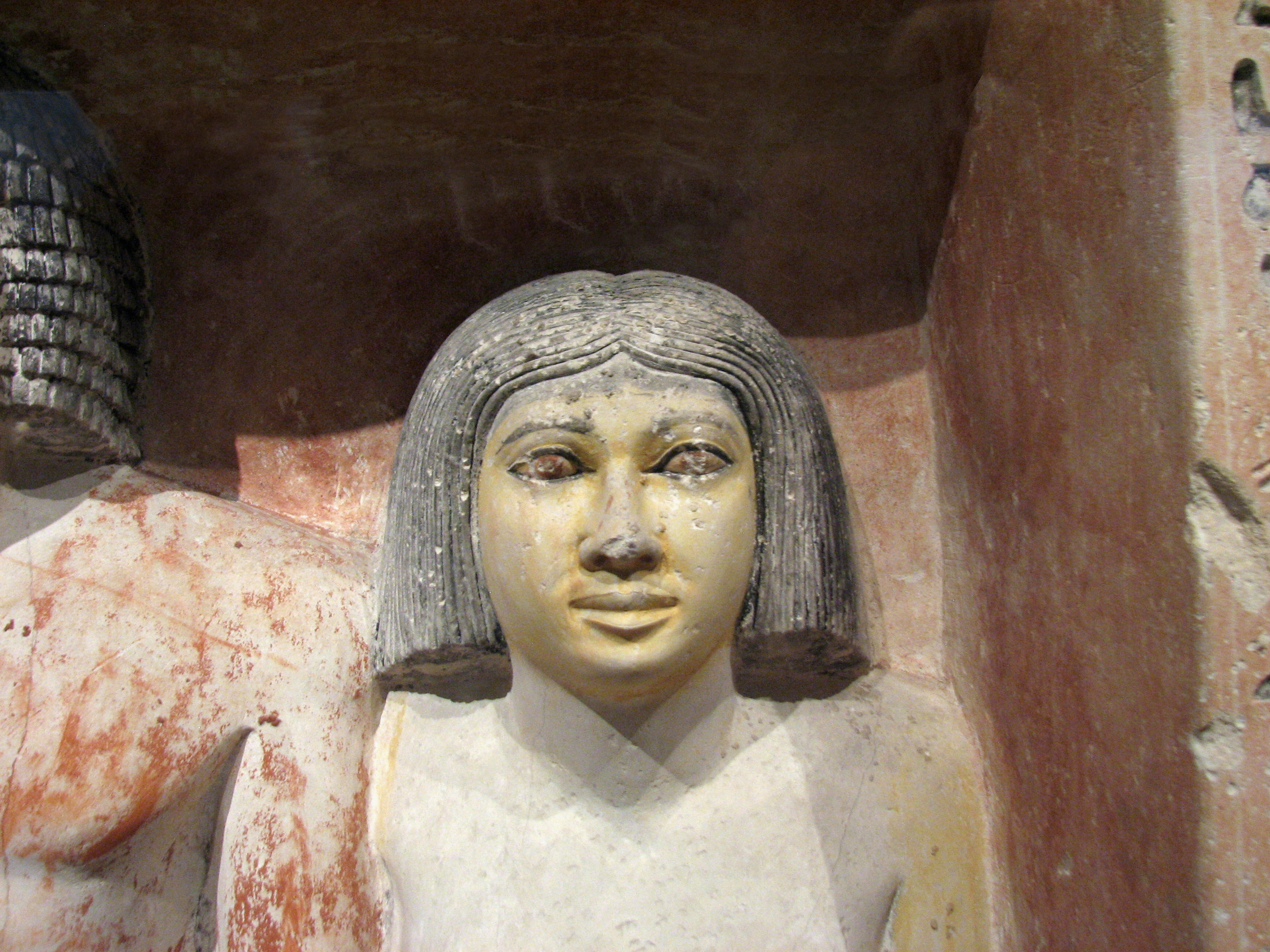
Penmeru's wife Meretites...
Photos ©Joan Ann Lansberry, 2014
